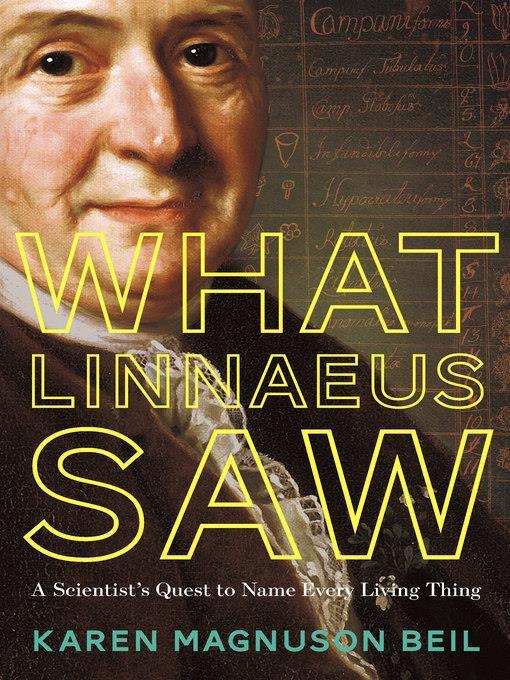
What Linnaeus Saw
A Scientist's Quest to Name Every Living Thing
فرمت کتاب
ebook
تاریخ انتشار
2019
Lexile Score
1110
Reading Level
7-9
نویسنده
Karen Magnuson Beilناشر
Norton Young Readersشابک
9781324004691
کتاب های مرتبط
- اطلاعات
- نقد و بررسی
- دیدگاه کاربران
نقد و بررسی

August 15, 2019
Carl Linnaeus (1707-1778) was responsible for developing a method for classifying and naming plants and animals that remains in use today. Linnaeus, born in Sweden, was an indifferent student, showing a complete lack of enthusiasm for the career in the ministry his parents intended he follow. It was nature that sparked his interest and eventually drove his future path to become a physician and, more importantly, a naturalist and influential college professor who inspired many of the next generation of scientists. It had been clear to Linnaeus from his youth that the study of the natural world badly needed a uniform method for organizing discoveries. After examining several existing methods, all of them significantly flawed, Linnaeus used his thorough understanding of nature to craft logical methods of classification and naming. They were quickly recognized by many European scientists as inspired methods for managing the complexity of the natural world, coming at a critical time when European explorations were resulting in myriad discoveries new to them. Beil's enthusiastic exploration of what could have been a dry and tedious topic is instead a highly engaging and entertaining page-turning presentation further enlivened with numerous period illustrations that perfectly accompany comprehensively researched text. Excellent backmatter rounds out this fine effort. An outstanding biography of a brilliant and fascinating man who is well worth the attention. (Biography. 10-16)
COPYRIGHT(2019) Kirkus Reviews, ALL RIGHTS RESERVED.

October 1, 2019
Gr 7 Up-Many students can explain biological classification in its simplest terms. But how many know scientist Carl Linnaeus, the creator of that system? This biography presents the details of Linnaeus's life in chronological order, weaving facts with the unique experiences that influenced his life choices and scientific work. Beil, a former news reporter and science writer, widens the scope of her text with fascinating details about Linnaeus's travels as a young man, as well as the prevailing cultural and religious beliefs of his time, which had a significant impact on his views of the natural world and its living components. Researched information fills each chapter, as does educator-friendly content primed to spice up discussions about biological classification. Despite its readability, however, this work seems unlikely to be a popular choice among students looking for a quick read. There are an exceptional number of excellent historical illustrations included with the text, a detailed time line, and source material. VERDICT Beil's storytelling skill elevates the biographical information, mimicking the excitement and mystery of scientific discovery. A well-researched choice for YA biography collections about a significant scientific pioneer.-Casey O'Leary, Meredith Nicholson School 96, IN
Copyright 2019 School Library Journal, LLC Used with permission.

October 1, 2019
Grades 9-12 Who would ever have the curiosity, patience, and discipline to name and catalog all living things in the natural world? Eighteenth-century Swedish biologist Carl Linnaeus! In this meticulously researched biography, Beil explains the inconsistency in how early scientists named the world around them and how Linnaeus became the father of taxonomy. His development of a classification system and binomial nomenclature (two-word naming) system simplified, standardized, and revolutionized the language of natural scientists. This wasn't an overnight change, but a process that the author recounts in great detail, from Linnaeus' years of observation to his careful categorization of minerals, plants, and animals based on specific traits. Beil also emphasizes how Linnaeus challenged old beliefs when he concluded that new species could emerge since the Creation and classified humans in the same order as apes and monkeys. Historic reproductions, samples from Linnaeus's journals, and extensive back matter add to the scholarly value. Although intended for teens, adult collections may get more usage out of this enlightening narrative of a rule-breaker turned rule-maker.(Reprinted with permission of Booklist, copyright 2019, American Library Association.)

























دیدگاه کاربران